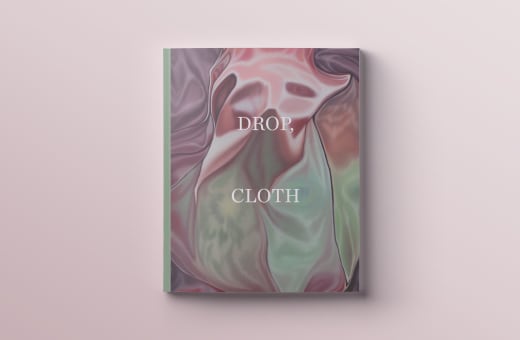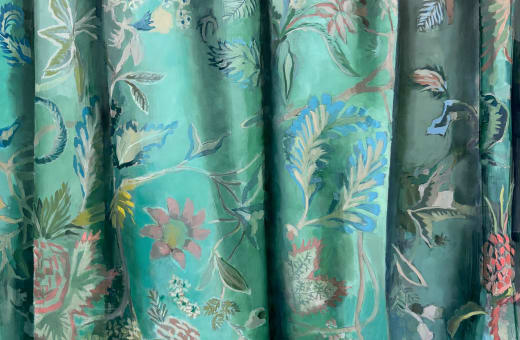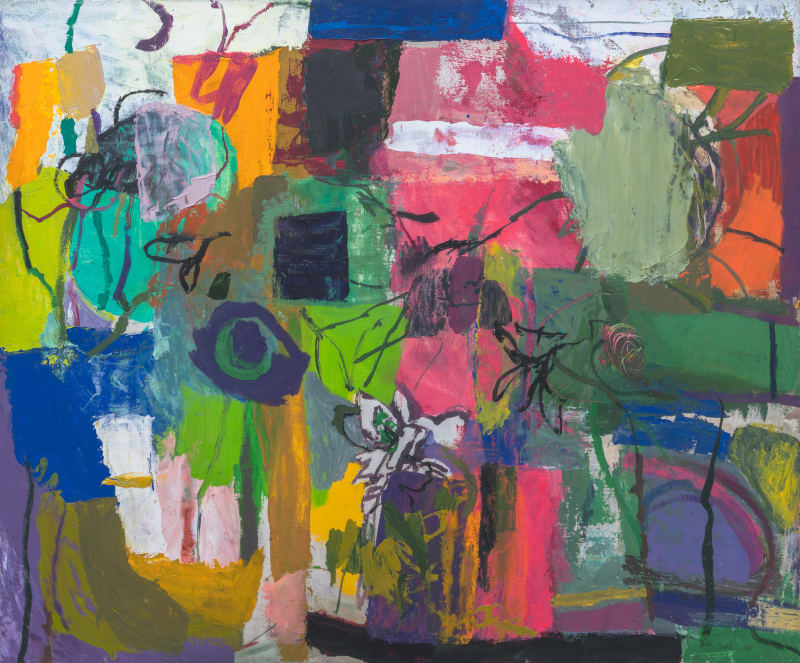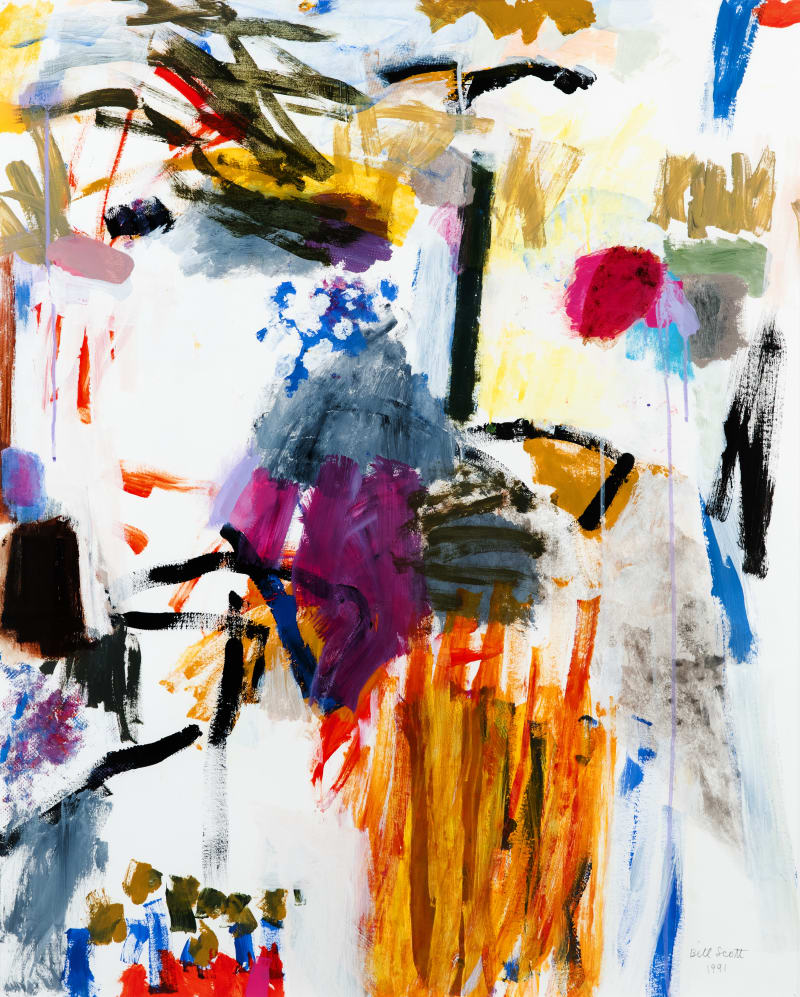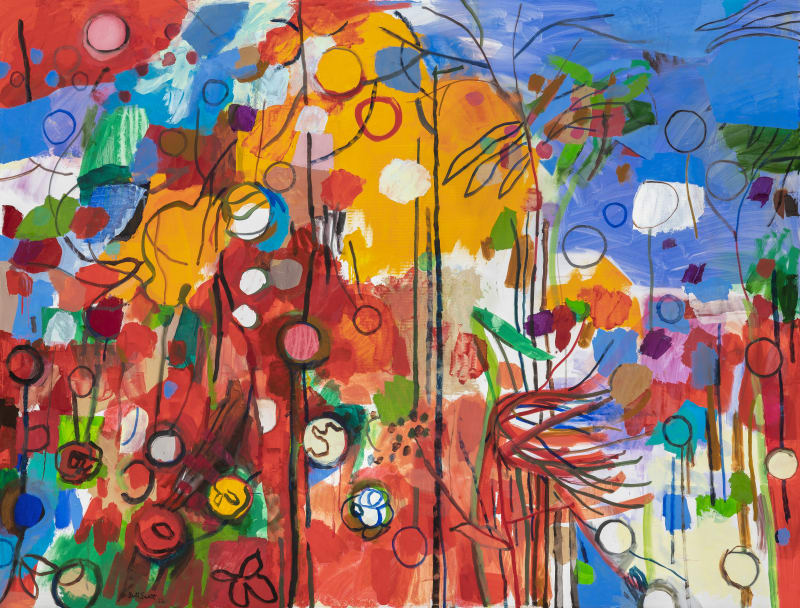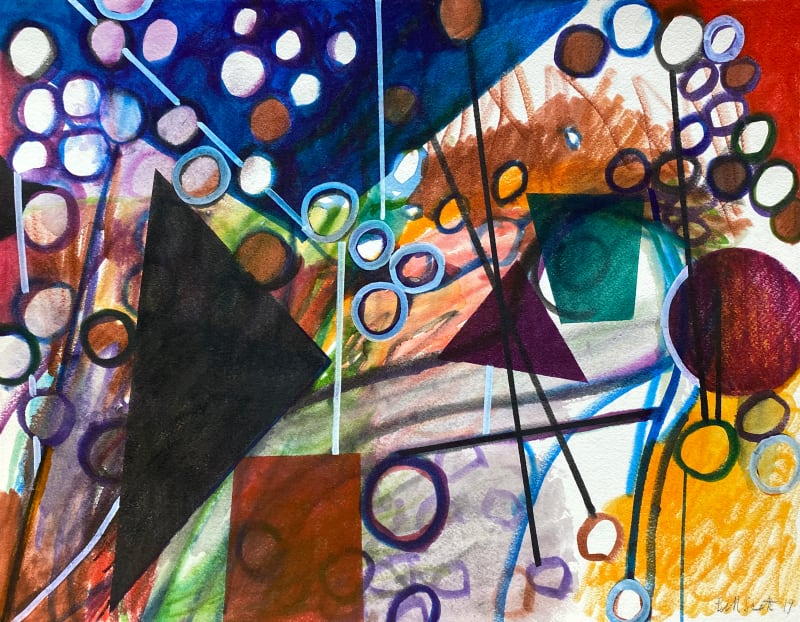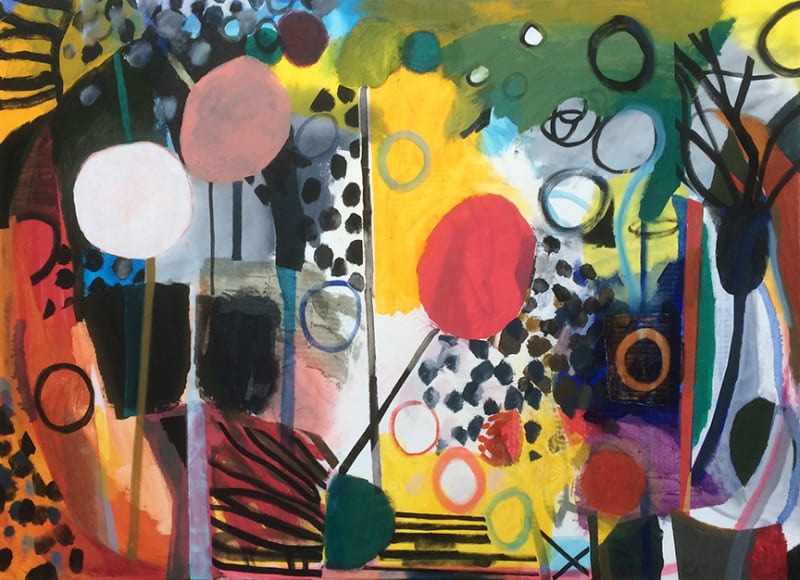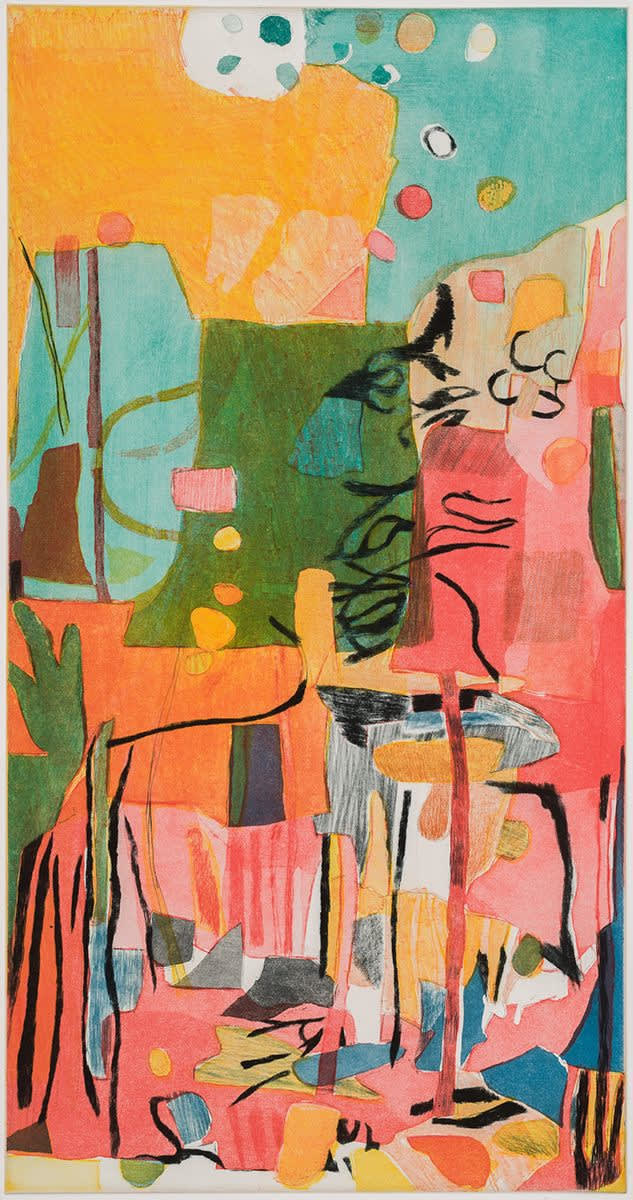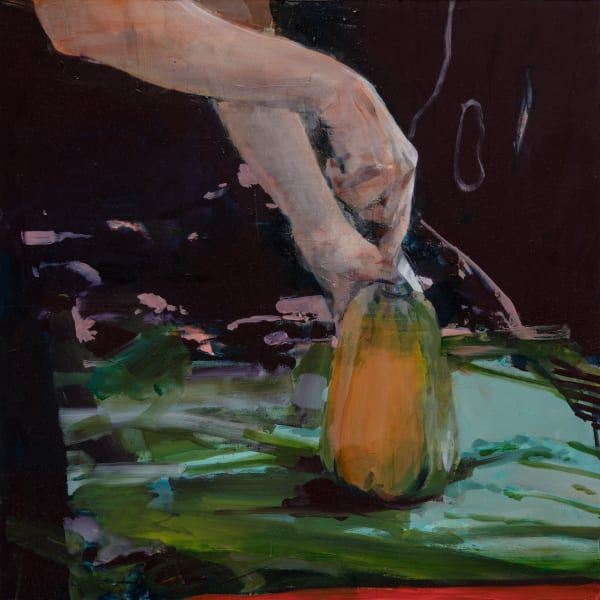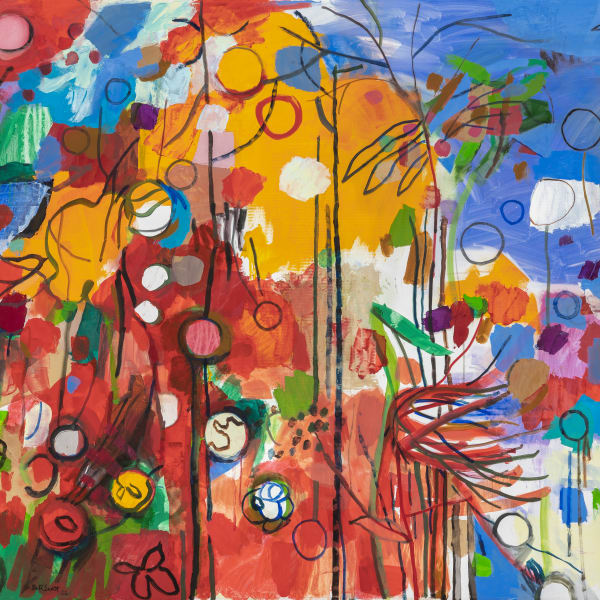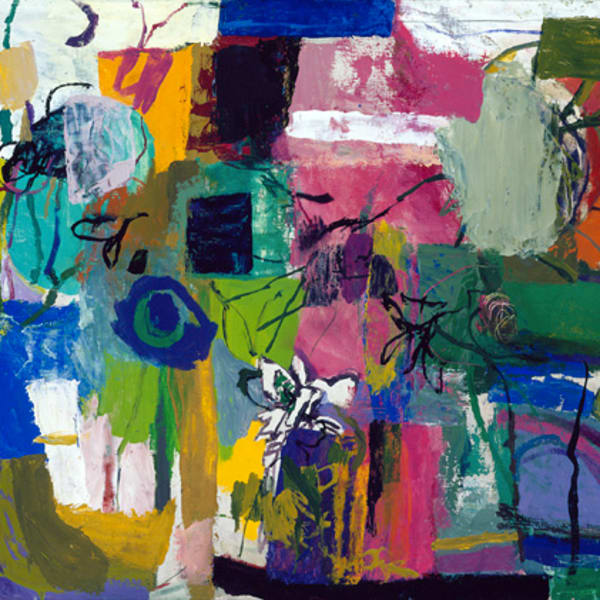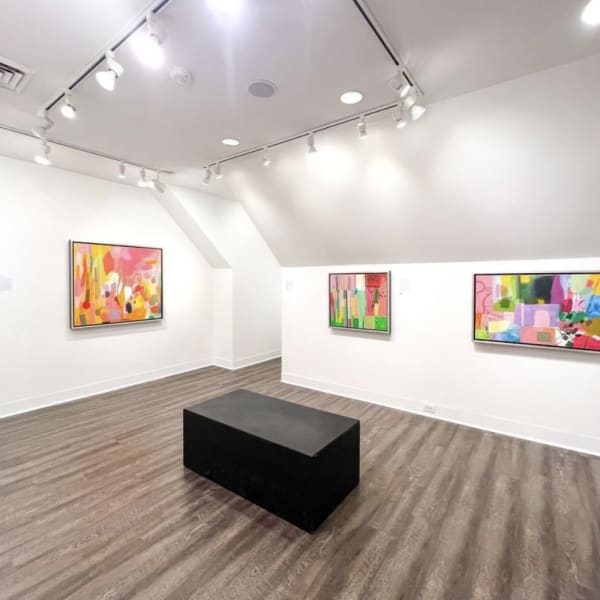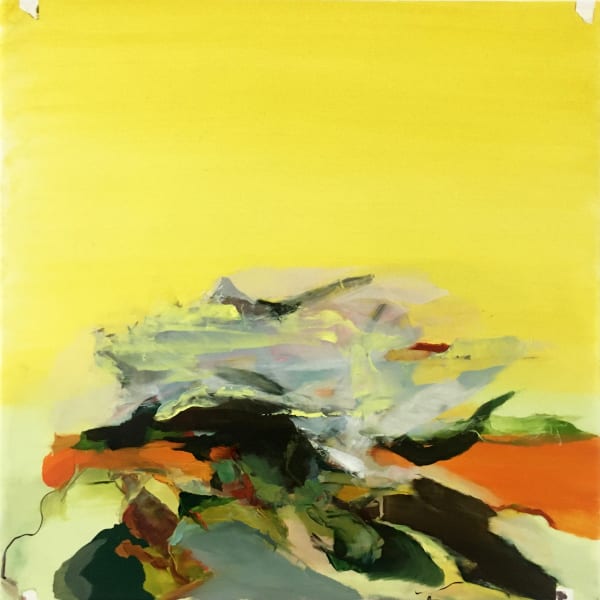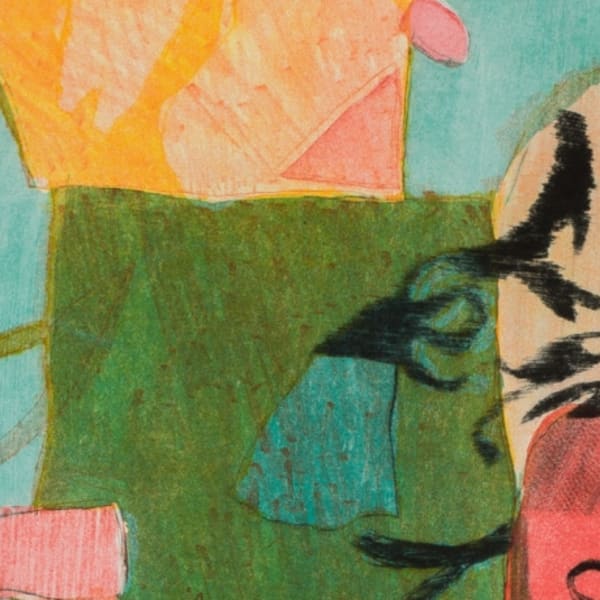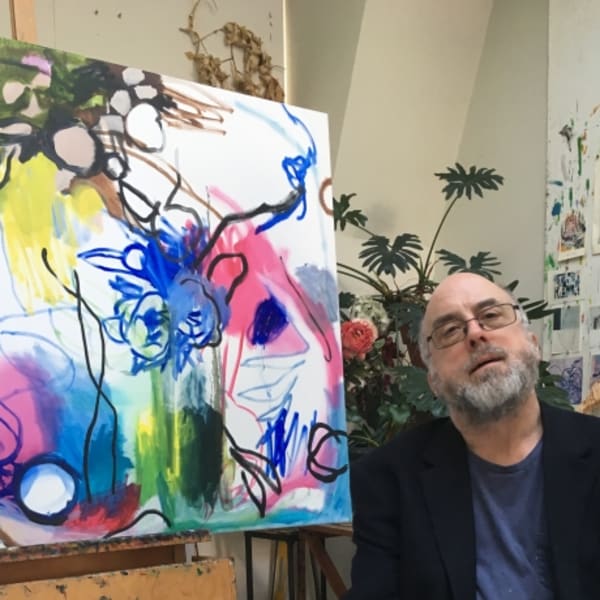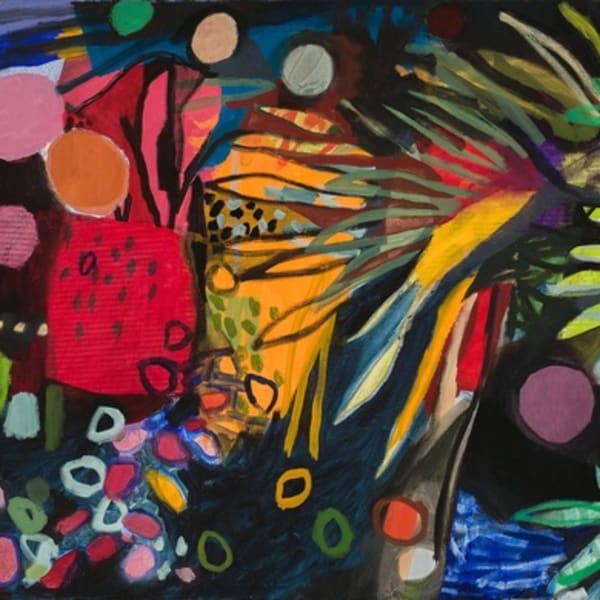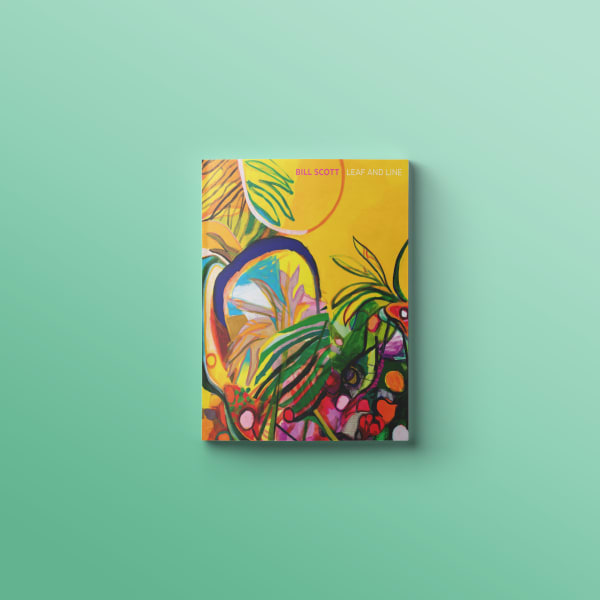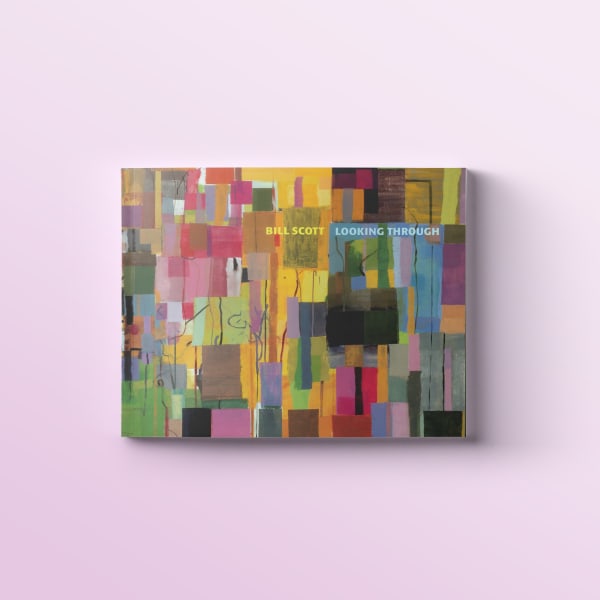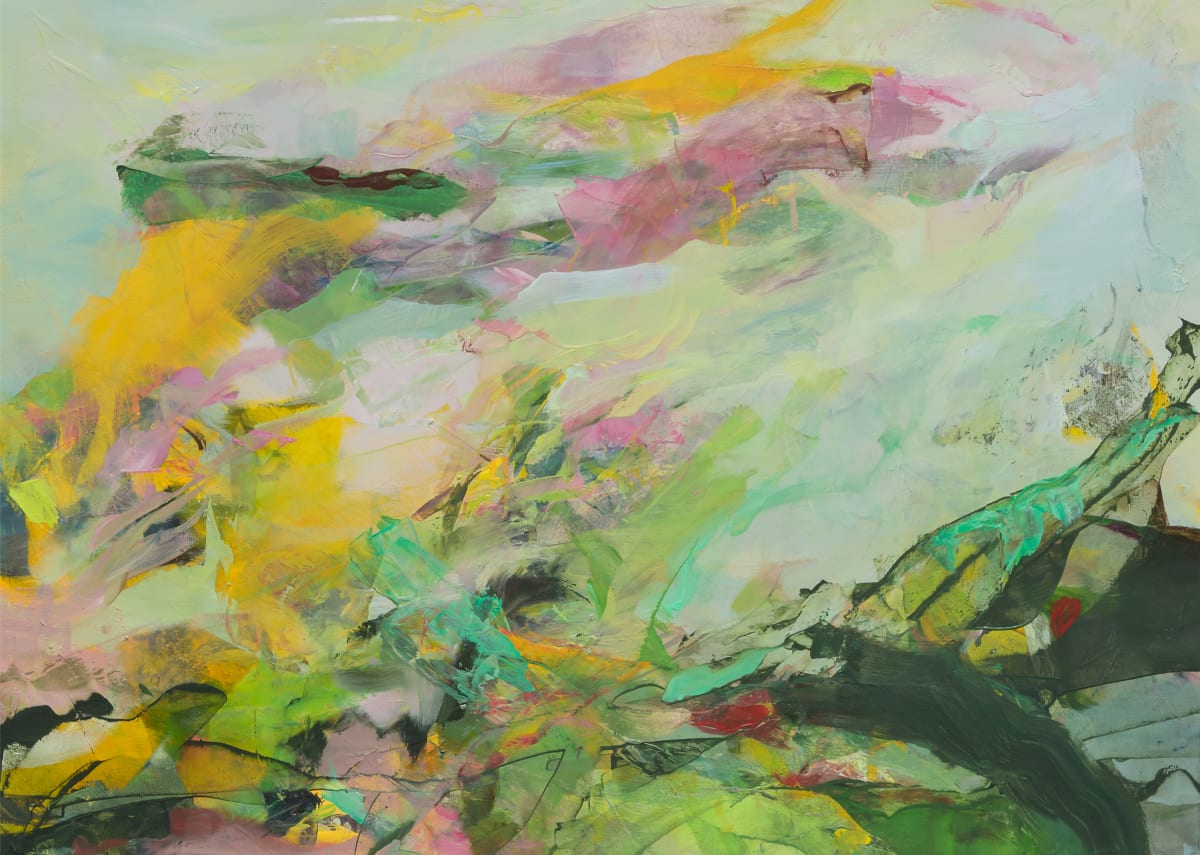
He is a painter of sensations and feeling rather than one of tangible realities
Bill Scott’s paintings are radiant, with a quality of surface achieved through the thinnest applications of paint and the use of various techniques honed over decades. This radiance has remained a constant as his work continues to evolve and is visible in both his paintings and works on paper. Scott creates contrast between opacity and transparency, where blocks of color are overlapped with linear forms. In certain areas, paint is scraped away or thin layers are applied over patterned surfaces, creating compositional variance akin to collage. This quality is evident particularly in Scott’s prints, with shallow surfaces that visually read as separate components layered upon one another. Scott spends a great deal of time in a printmaking studio, where through his longstanding and rewarding partnership with master printer Cindi Royce Ettinger, makes color etchings based on elements of his large-scale oil paintings.
Bill Scott’s paintings are radiant, with a quality of surface achieved through the thinnest applications of paint and the use of various techniques honed over decades. This radiance has remained a constant as his work continues to evolve and is visible in both his paintings and works on paper. Scott creates contrast between opacity and transparency, where blocks of color are overlapped with linear forms. In certain areas, paint is scraped away or thin layers are applied over patterned surfaces, creating compositional variance akin to collage. This quality is evident particularly in Scott’s prints, with shallow surfaces that visually read as separate components layered upon one another. Scott spends a great deal of time in a printmaking studio, where through his longstanding and rewarding partnership with master printer Cindi Royce Ettinger, makes color etchings based on elements of his large-scale oil paintings.
An expert colorist, Scott draws from nature and his own imagination, making paintings that complicate firm boundaries between the abstract and the representational. Although his canvases overflow with lush renderings of flora and fauna, he has little interest in copying directly from nature. Instead, each painting is an offering of a perfect window view, an idealized garden, or a feeling evoked by the final days of a season. He is a painter of sensations and feeling rather than one of tangible realities, and his paintings are associative, where their titles hint at, without fleshing out, points of inspiration.
Scott’s most recent paintings show a new mark of release, a distinct shift in the career of an artist who has most often been associated with the Philadelphia colorist tradition. While color remains at the heart of Scott’s art making, his recent paintings announce a return to a darker ground. So while many of the new paintings contain his signature layering of blocks of color, they assert as well a mature soulfulness in their complexity and uplifting tones.
Scott began his career studying at the Pennsylvania Academy of the Fine Arts from 1974 to 1979 but considers longer periods of working informally with painters Jane Piper and Joan Mitchell as the pivotal influences of his practice. Scott has exhibited widely over the past three decades at museums that include Swarthmore College, Hollins University, State Museum of Pennsylvania, National Academy Museum, and University of Delaware. Major public collections holding Scott’s work include Cleveland Museum of Art, Delaware Art Museum, the Philadelphia Museum of Art, the Munson-Williams-Proctor Institute Museum of Art, and Woodmere Art Museum. In 2006, he was awarded a Distinguished Alumni award from the Pennsylvania Academy. He lives and works in Philadelphia.




